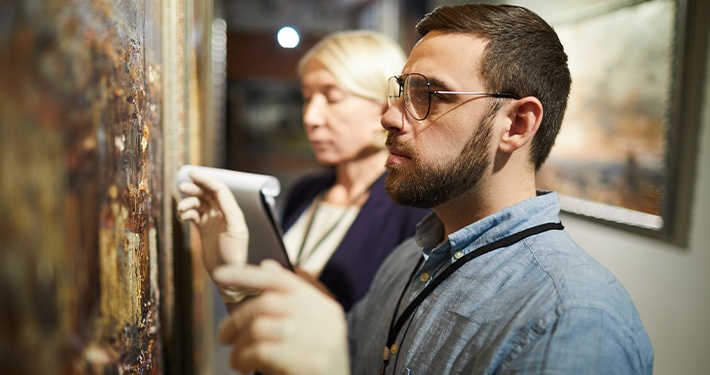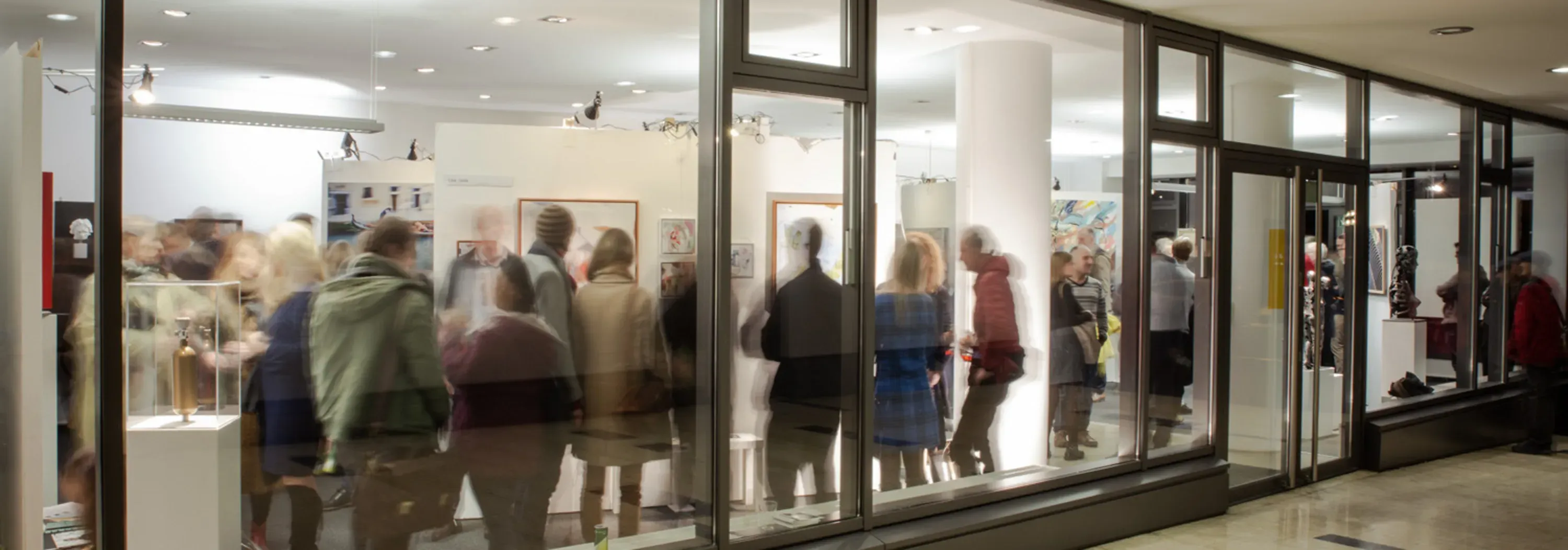

HOW CAN ART COLLECTORS INCREASE THE VALUE OF THEIR COLLECTION?
02 Feb 2021
HOW CAN ART COLLECTORS INCREASE THE VALUE OF THEIR COLLECTION?
Art is different from most traditional investments like shares or real estate. Artworks do not produce regular income. In addition, storing and insuring art costs money. So how do collectors benefit from their collections? What are working collection strategies? We speak about relevant factors and examples from successful art collectors.

TRADITIONAL ASSETS COMPARED TO ART INVESTMENTS
Most assets do produce regular income: Real estate generates rental income. Company investments and shares produce returns, generate yields and may pay out regular dividends. Most traditional investments are supposed to generate cash without selling. Artworks are cash-flow negative before they are sold. Most traditional investment are quite liquid: You can sell your shares within minutes. In real estate a sale can take weeks, months or even years and is comparable to art in terms of liquidity. Despite being a complex investment segment, many collectors do benefit financially from a thorough art curation.
SUM OF PARTS VS. CURATED, SPECIAL COLLECTIONS
The total value of a well curated collection surpasses the sum of its
parts. In other words, 1 +1 is > 2. This is no magic trick. Art
collections with investment purposes are usually specialized
collections. These collectors often collaborate with professional
curators, auction houses, museums and experienced gallerists as well as
specialists from the insurance sector. Over time, they select artworks
from single artists, in a specific media, material or style, or art from
a certain time in history or from a particular region or country. These
artworks belong to specific themes and complement each other.
EXAMPLES: CHARLES SAATCHI AND THE MUGRABI FAMILY
In the 1980s Charles Saatchi understood that just owning a few pieces by an artist is not the same as owning the best artworks of selected artists such as Cy Twombly, Tracey Emin, Jake and Dinos Chapman, Gary Hume or future Turner Prize-winner Damien Hirst.
Famous collectors such as the Mugrabi family show us how owning one of the largest Andy Warhol collections on the planet, rumoured to be in excess of 1,000 artworks, pays off in the long run. The family is a market maker and buys or sells artworks about 100 times every year.
Famous collectors such as the Mugrabi family show us how owning one of the largest Andy Warhol collections on the planet, rumoured to be in excess of 1,000 artworks, pays off in the long run. The family is a market maker and buys or sells artworks about 100 times every year.
CONDITION OF A COLLECTION
Preservation of the artworks and the condition of the collection is extremely important when it comes to at least retaining the value of a collection. Depending on the material of the artwork, preservation efforts can be completely different. Contemporary artworks are often created using mixed media techniques and new materials, which increases the complexity of the preservation task for collectors. Adequate insurance coverage is also relevant in this context and needs to be re-assessed on a regular basis. This means in practice that holding art requires regular cash outflows for conservation purposes and should be factored into ROI calculations.

DISPLAY OF COLLECTIONS IN MUSEUMS
For exceptional artworks a museum exhibition is like a quality stamp that usually increases the value of a collection and the reputation of the collector. By the way, it is a nice way to reduce the overall storage costs of an art collection. At the same time, in many countries this step may entail tax advantages.
EACH COLLECTOR HAS A DIFFERENT STORY
There is are no general rules in fine art investment. Some collectors follow their own taste and only buy what they really like. Some anticipate trends, others buy anti-cyclical. Most collectors do develop strong relationships with artists, art dealers and auction houses and process information constantly in order to buy into ideas and stick to them. Networking among collectors also helps experienced art buyers to decide on timing and selection of artworks.
NEW BOUNDARIES
We live in postmodern times and even if some art buyers agree that only a dead artist is a good artist, there are also vast collections focussing on contemporary art created by living artists and on hard-to-display artworks such as performance art, huge installations or video art. From an investment perspective, the risks in these areas are far above average: Storage, logistics, handling and insurance are very difficult. As a consequence, these artworks are usually bought by very experienced collectors and art lovers.
THE ADVANTAGE OF BEING A MARKET MAKER
Once a collector has built up a working network, he is able to select artworks, exhibit them or bring them into the right auction and sell them within a short time to other market participants that have seen artworks from this collector rise even more in price after they have been sold. As a consequence, artists, galleries, specialists at auction houses and other collectors observe every step of this collector. This entails power and market making capabilities. For outsiders it may look like a perpetuum mobile but it also means that this collector does his homework correctly and works constantly on increasing the value of his collection and reputation in the art world. Failures always spread faster than success stories and that is why collectors with continuous success stories are well respected by the art market.

ARTOUI CORPORATE ART CONSULTING
Do you have questions or do you need more information?
Please get in touch.
Please get in touch.
Share this article
Categories
Featured posts

FINE ART PRICING – 23 PRICE DRIVERS FOR ARTWORKS
16 Jan 2021

WHAT IS 1 MINUTE ART?
08 Feb 2020

Thomas Guggemos | Surrealist Painter
01 Nov 2020
You might be interested